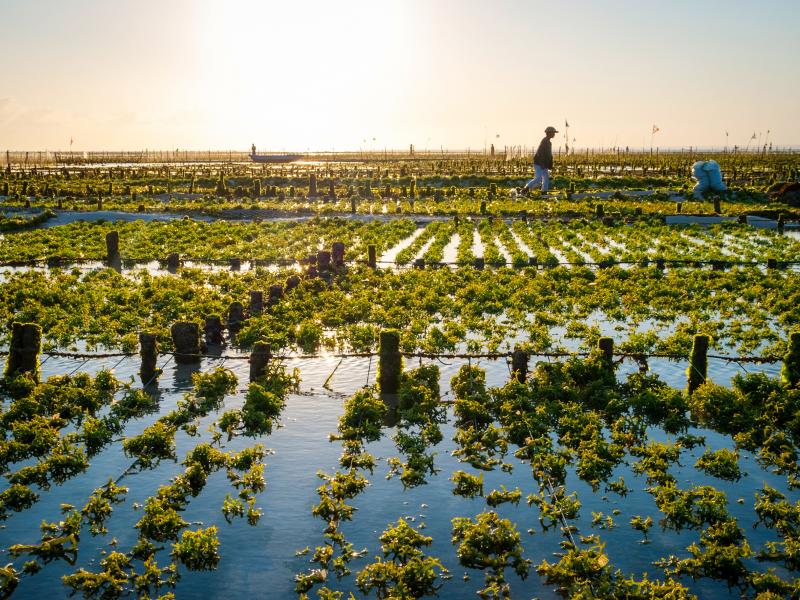Restorative Ocean Farming

Description of the innovative solution
The negative environmental impacts of aquaculture include nutrient buildup, water eutrophication, reduction of water quality. It also includes the alteration or destruction of natural habitats and the introduction and transmission of aquatic animal diseases. Aquaculture practices can deplete the water of oxygen, creating algal blooms and dead zones This innovation proposes to introduce restorative ocean farming as a new aquaculture practice. Restorative ocean farming combines different aquaculture production such algae, shellfish and fish. This practice is reported to have a positive effect on...
The negative environmental impacts of aquaculture include nutrient buildup, water eutrophication, reduction of water quality. It also includes the alteration or destruction of natural habitats and the introduction and transmission of aquatic animal diseases. Aquaculture practices can deplete the water of oxygen, creating algal blooms and dead zones This innovation proposes to introduce restorative ocean farming as a new aquaculture practice. Restorative ocean farming combines different aquaculture production such algae, shellfish and fish. This practice is reported to have a positive effect on the marine environment and restoring coastal biodiversity. Integrated aquaculture is also referred to as integrated aquaculture or ocean gardens.
Examples and additional resources
Real-world examples
See this solution in action in different contexts and settings around the world
Thimble Islands regenerative ocean Farm
Seaweed farmers in Tanzania’s Zanzibar Archipelago
Restorative ocean farming model
Additional resources
Learn more about this solution through studies, articles, business cases, and other information
How restorative ocean farming works
Contacts
Connect to others working on and with this solution around the world
Pathways to uptake
Engage with our “backcasting tool” to imagine and design “pathways to uptake” for this solution in your setting.
This process involves defining a future vision of this solution being used in your context, and then working “backwards” to identify necessary steps to achieve this vision by 2030. Going through this exercise as an individual or with a team can help to clarify the WHAT/WHEN/HOW of moving a solution (or package of solutions) towards having major impact. We hope these pathways will inspire outside-of-the-box thinking, creative approaches, and actionable concrete steps to move ideas into action.
Pathway builder
Explore pathways for this solution
Be the first one and add a pathway for this solution!